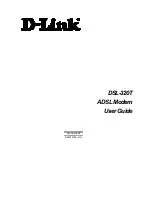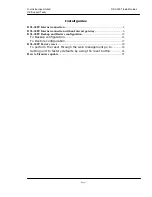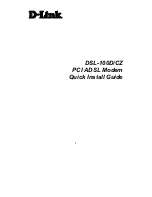
40
MultiModemBL User Guide
4.10 Handshaking Details
This section briefly explains what happens between two modems in a normal call. We are assuming
that there are MultiModems at both the originating and at the answering end of the telephone line. (If
other brands of modems are used with our modems, they will still communicate, but each
manufacturer tends to use slightly different delay timings and sequences, and many of the brands
vary in their LED designations.)
When a call is dialed from the originating modem, the called modem responds to the ringing by
switching into Answer mode and by turning on its RI (Ring Indicator, RS-232C/V.24 Pin 22) signal as
the rings are detected. (The BL-MAC models do not use DTR.)
Note that in order for the called modem to be able to answer the call, it must have a high DTR (Data
Terminal Ready) signal. This signal comes from the computer or terminal to which it is attached, on
RS-232C Pin 20.
When the called modem answers the call, its OH (Off Hook) circuit comes on and the ringing stops.
Two seconds after the call is answered, the called modem begins transmitting its answerback tone.
The originating modem, which has been off hook and waiting for the answerback tone, turns on its
transmitter when it hears the tone. Then after a one second delay, the orignating modem's CD
(Carrier Detect) comes on.
The called modem then responds to the originating modem by turning on its CD (Carrier Detect)
signal, and the handshaking is completed.
Note: With the modem in Reliable or Auto-Reliable mode, some additional handshaking takes place.
This is explained in
Section 5.4.8
.
4.11 Call Termination
There are a number of ways to terminate a call, or simply stated, hang up. They are:
1) Command Mode Control. To terminate a call by Command Mode, enter +++ATH then
RETURN; or, send a BREAK signal followed by ATH and a RETURN.
2) DTR Control. If DTR (Data Terminal Ready) is turned off for 50 milliseconds or more, a
disconnect occurs. This is probably the most common method used by computer systems at the
automatic answer end of the line to cause the answering modem to disconnect after logging off
procedures.
3) Loss of Carrier. After a data connection is established, the modem disconnects if a loss of
carrier occurs for 700 milliseconds (0.7 seconds) or more. Note that one cause of carrier loss
would be if one of the modems disconnect normally.
4) Abort Timer.
Answer Mode: When OH (Off Hook) comes on, the called modem starts a forty-five-second
timer and waits for a carrier signal from the originating modem. If carrier is not detected within
this period, the modem disconnects (hangs up) and is ready for another call.
Originate Mode: The abort timer functions the same as in answer mode, except that the timer
begins after the modem has completed dialing, instead of when it first goes off hook. It is possible
to change this forty-five second wait period to any other value (from 0 seconds up to 255
seconds), or to disable the timer completely by re-configuring S-Register S7 (see
Chapter 6
).
5) Inactivity Timer. Causes the modem to disconnect if no data is transmitted or received for a
specified time. The timer is restored any time a character is passed through the serial port in
either a send or receive state. This timer runs in both normal or reliable connections and is
controlled by S-Register S30. The Inactivity Timer can be disabled by setting S30 to 0, which is
the factory default setting.
Summary of Contents for BL-Series
Page 1: ...BL Series Intelligent Data Fax Modem User Guide...
Page 6: ...vi...
Page 7: ...Chapter 1 Introduction and Description...
Page 18: ...18 MultiModemBL User Guide...
Page 19: ...Chapter 2 Installation and Connection...
Page 27: ...Chapter 3 Software Configuration and Modem Basics...
Page 34: ...34 MultiModemBL User Guide...
Page 35: ...Chapter 4 Manual Dial and Automatic Answer...
Page 41: ...Chapter 5 Command Mode...
Page 76: ...76 MultiModemBL User Guide...
Page 77: ...Chapter 6 S Registers...
Page 87: ...Chapter 7 Callback Security and Remote Configuration...
Page 96: ...96 MultiModemBL User Guide...
Page 97: ...Chapter 8 Modem Testing...
Page 106: ...106 MultiModemBL User Guide...
Page 107: ...Chapter 9 DIP Switch Settings...
Page 117: ...Chapter 10 Warranty Service and Tech Support...
Page 123: ...Appendixes...
















































